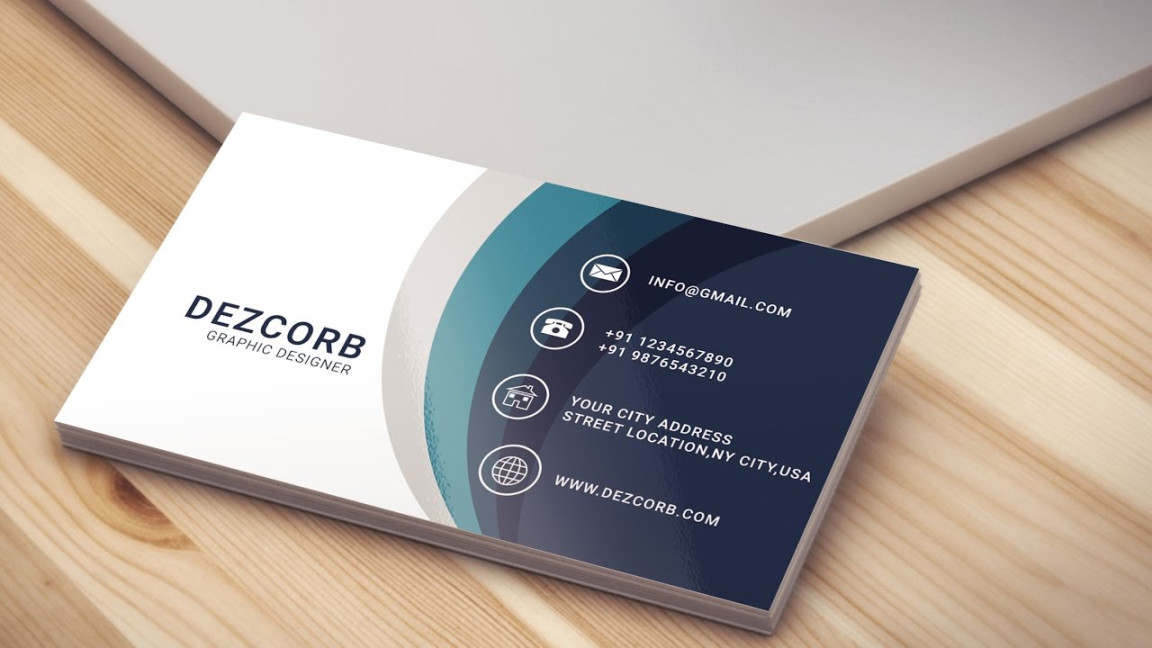Business Cards are essential marketing tools that leave a lasting impression. They serve as a concise representation of your professional identity and provide potential clients or colleagues with essential contact information. Designing a visually appealing and professional business card can significantly enhance your brand image. This guide will delve into the intricacies of creating impactful business card templates using Adobe Photoshop CS6.
Laying the Foundation for Your Design

Before diving into the design process, it is crucial to establish a solid foundation for your business card template. Begin by gathering essential information such as your name, title, company name, contact details, and logo (if applicable). This information will serve as the core elements of your design.
Selecting the Right Dimensions and Orientation
The standard size for business cards is 3.5 inches by 2 inches. However, you have the flexibility to customize the dimensions to suit your preferences. Consider the overall design aesthetic and the intended use of your business card when making this decision. Additionally, choose between portrait or landscape orientation based on the layout and content you envision.
Choosing a Suitable Font
The font you select plays a pivotal role in conveying professionalism and readability. Opt for fonts that are clean, legible, and consistent with your brand identity. Sans-serif fonts like Arial, Helvetica, or Roboto are popular choices for business cards due to their modern and professional appearance. Avoid using excessive fonts, as this can create a cluttered and unprofessional look.
Designing the Front of Your Business Card
The front of your business card is the most visible part, so it’s essential to make it visually appealing and informative. Consider the following elements:
Logo Placement: If you have a logo, position it prominently on the front of your business card. Ensure it is clear, well-defined, and complements the overall design.
Designing the Back of Your Business Card
While the front of your business card is crucial, the back can also be used to provide additional information or enhance the overall design. Consider the following options:
Additional Contact Information: If you have multiple phone numbers or email addresses, you can include them on the back of your business card.
Color Scheme and Branding
Choosing a suitable color scheme is essential for creating a cohesive and professional business card. Consider your company’s branding guidelines and select colors that reflect your brand identity. Use a limited color palette to avoid a cluttered and overwhelming design.
Whitespace and Alignment
Whitespace is an essential component of a well-designed business card. It creates a sense of balance and improves readability. Ensure there is adequate spacing between elements and align text and graphics consistently to achieve a polished look.
Proofreading and Finalizing Your Design
Before printing your business cards, carefully proofread the design for any errors or inconsistencies. Check for spelling mistakes, grammatical errors, and ensure that all contact information is accurate. Once you are satisfied with the design, save it as a high-resolution file format, such as Adobe Photoshop (PSD) or PDF, to prepare it for printing.
By following these guidelines and leveraging the capabilities of Photoshop CS6, you can create professional business card templates that leave a lasting impression. A well-designed business card can serve as a valuable marketing tool, helping you build your brand and connect with potential clients.